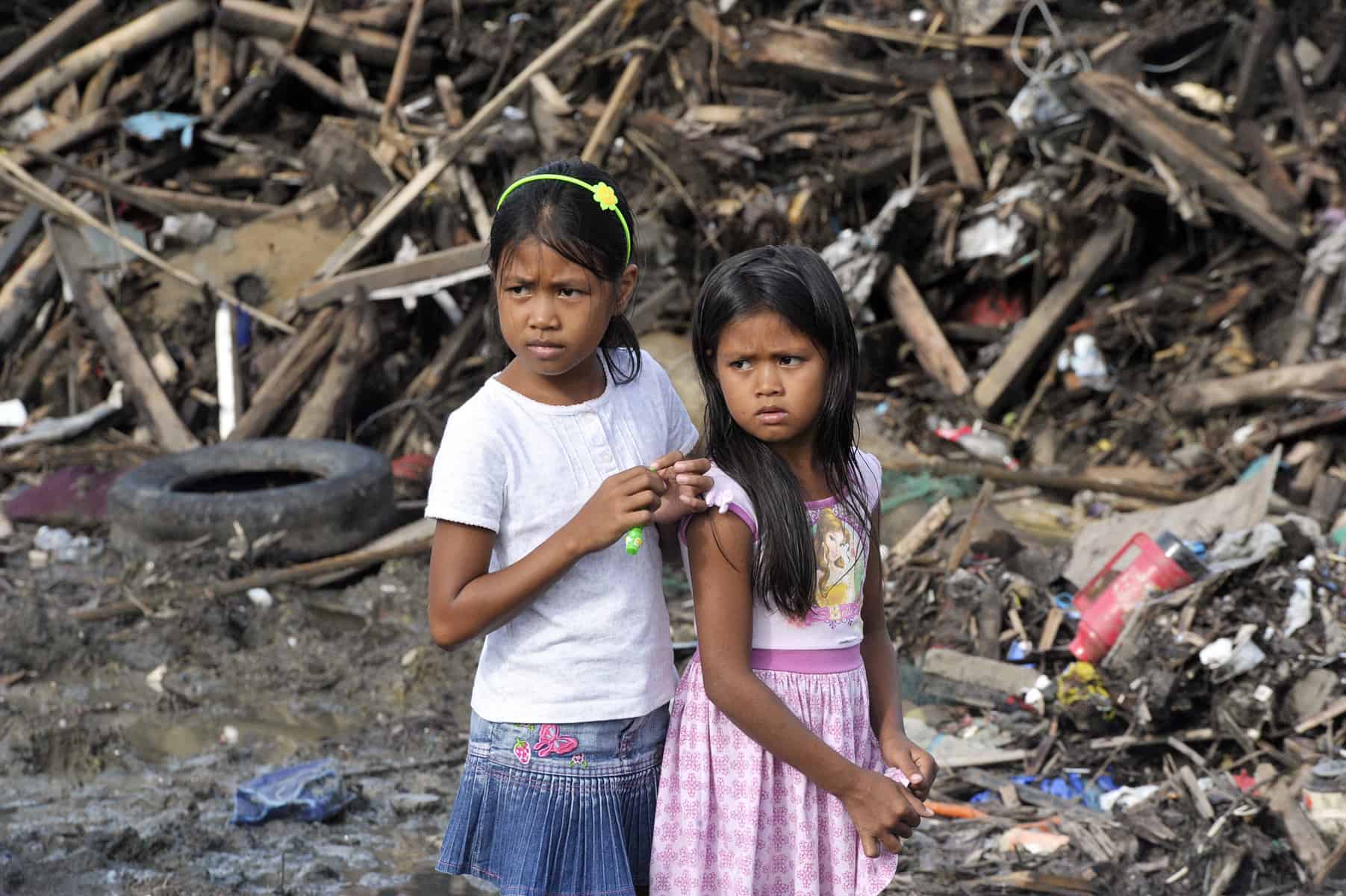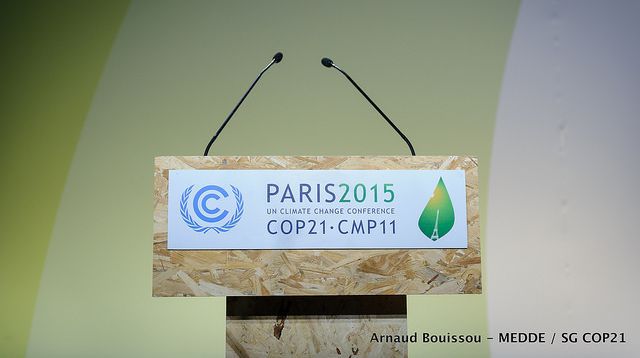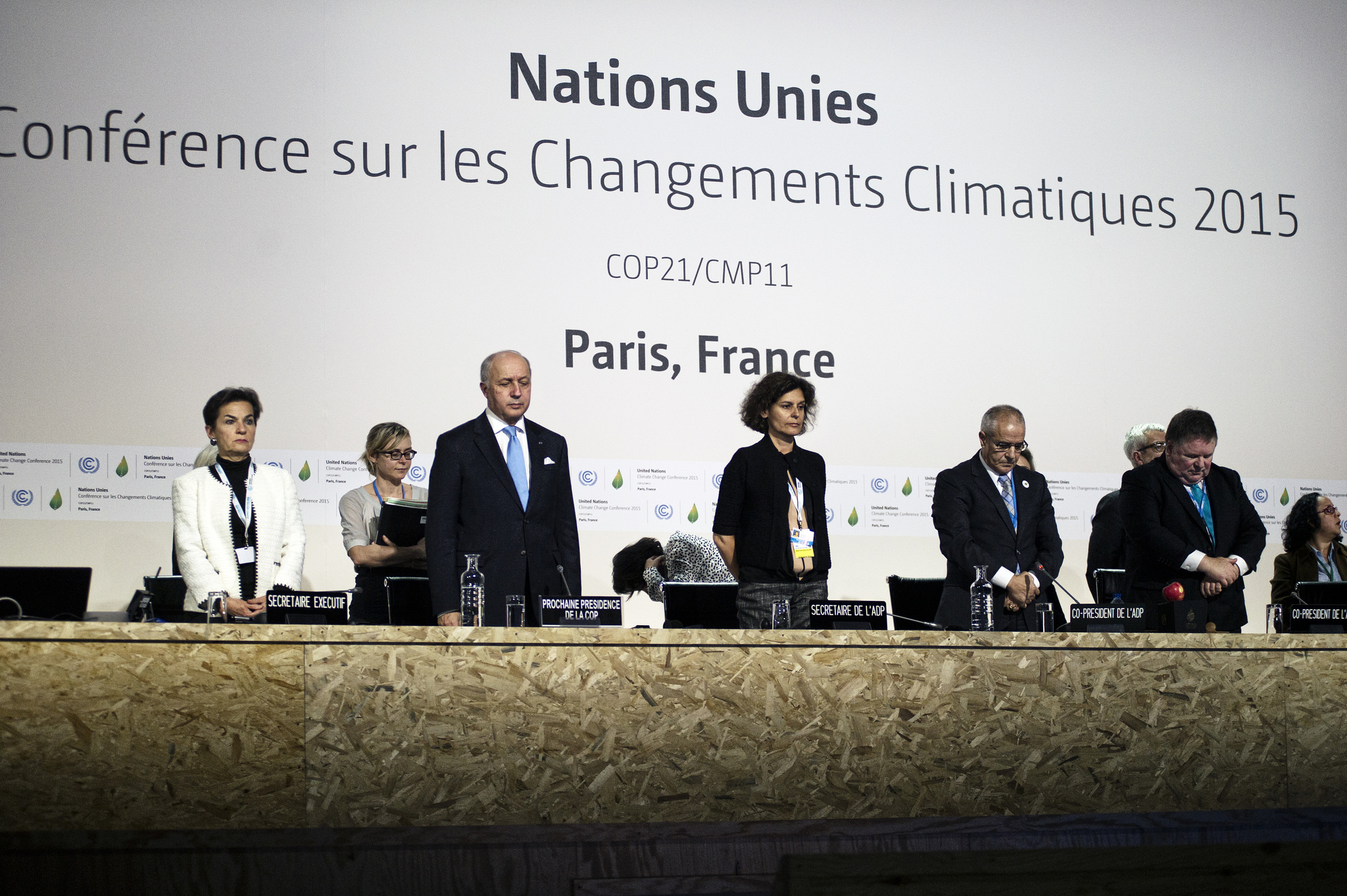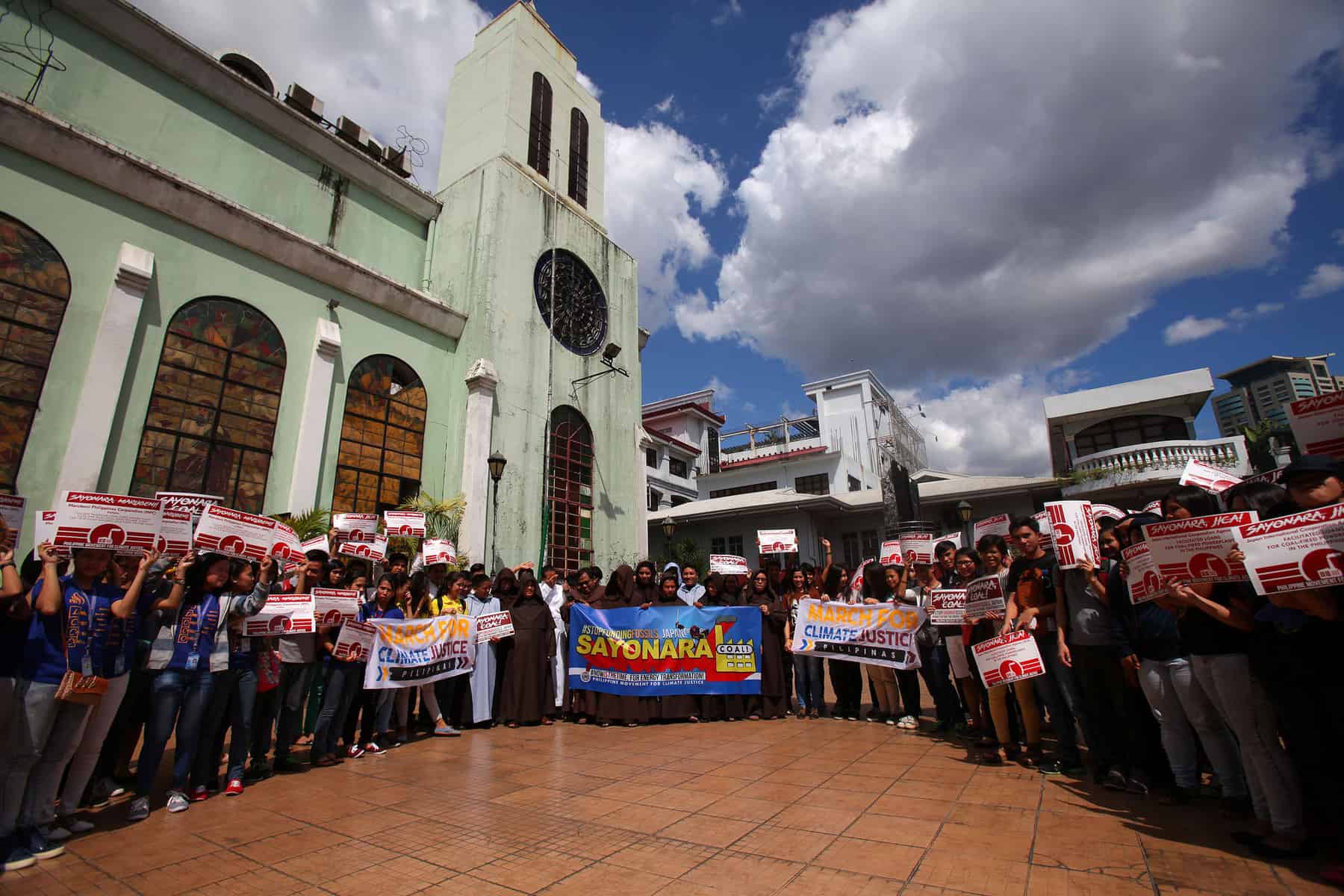May 4, 2016 | Risk and resilience
By Junko Mochizuki, Research Scholar, IIASA Risk and Resilience Program
Experts in the field of emergency management like to emphasize that there are important “lessons learned” in the aftermath of disaster situations. After large disaster events such as the 2015 earthquake in Nepal, and 2013 super typhoon Yolanda in Philippines, forensic investigations are often conducted to reveal ”what went wrong” in the chains of command, identifying what we can do differently when the next big one strikes. Such forensic investigations are not only relevant for the field of emergency management, but also for the field of disaster and climate risk management, which seeks to identify the underlying causes of what went wrong in the long chains of developmental policy intervention.

Survivors of Super Typhoon Yolanda in Tacloban City, Philippines, 2013. (cc) UN Photo/Evan Schneider
Over the years, researchers have identified a number of root causes that increase disaster risk—such as weak building codes and land use policy enforcement and overemphasis on ex-post emergency response as opposed to proactive management of disaster risk. Also, decades of economic studies looking at the costs and benefits of risk reduction investment show that such investment often pays off in the longer run. Yet, as the recent global trends of rising disaster risk unfortunately testify—we are far from learning these lessons effectively, or at least fast enough to beat the rising risk posed by future climate change: Global annual average disaster loss is estimated to have risen to approximately $300 billion in 2015 according to the UN Office for Disaster Risk Reduction (UNISDR).
As the special representative of the secretary general for disaster risk reduction, Robert Glasser wrote in the Guardian last week, “Every time there’s a mega disaster, there are lessons learned… The key question is always, how do you keep up the awareness after a couple of years?”
That is why the IIASA Risk and Resilience program’s research is increasingly focused on cognitive, behavioral, and governance aspects of societal learning on disaster risk reduction. We are currently working with public, private, and civil society stakeholders, asking the questions of why we, as a collective society, continue to fail to act on these lessons learned in disaster risk management and what we can do to change it. By combining both quantitative and qualitative systems analysis approaches, we are untangling why we make decisions the way we do, and what processes and institutional mechanisms directly and indirectly affect disaster risk and developmental outcome over the long term.
Given that catastrophic disasters are by definition rare events (hence opportunities for learning is naturally limited), we are doing this using novel methods such as participatory gaming or policy exercises in which we create virtual opportunities for stakeholders to experience complex decision-making in a safe learning environment. By creating stylized context for common decision-making (such as rural farmers making longer-term decisions on livelihood diversification, or urban planners addressing rising disaster risk due to rapid population growth), these gaming spaces serve as mechanisms through which stakeholders can not only learn about their cognitive and behavioral assumptions, but also through which learning can be accelerated, repeated, and shared among different communities facing similar development and disaster risk reduction challenges. We are running such policy exercises in the context of our flood resilience project and internal gaming project .
Decades of research have shown that there are common global lessons on development and disaster risk reduction but they are not so easily learned in practice. It is too often that that the windows of opportunities for policy learning are limited and we continue with business-as-usual of “lessons unlearned.” Creating an enabling environment for iterative learning is no easy task under these pragmatic constraints, but we hope that a bit of creativity and lots of hard work will eventually pay off in the long run.
Note: This article gives the views of the author, and not the position of the Nexus blog, nor of the International Institute for Applied Systems Analysis.
Dec 4, 2015 | Climate Change, Science and Policy
By IIASA Director General and CEO Professor Dr. Pavel Kabat. This article was originally published in the Huffington Post.
I was at the Kyoto climate talks in 1997. I remember doing the calculations, going through the proposals long into the night. I remember the moment of: “We did it. We have an international, legally binding agreement.” I remember the euphoria.
But I also remember what happened after that. As the years passed after Kyoto I saw that the reality of implementation was far from what we had envisaged. As a scientist in the field I took part in many government discussions, and I grew frustrated at the inability of institutions and governments to comply with the agreements.

More than empty promises?
These failures do not mean that Paris will just be the next in a string of ineffective climate talks. A global, UN-level agreement on climate change is necessary, and I believe Paris will deliver it. But I do not see it as providing more than a direction. Yes, we will have an agreement, but our unrelenting focus from Paris onward must be on how to implement it. And that will require a major change in our way of thinking.
Policymakers, climate scientists and society as a whole, must abandon the idea of climate change as a single, discrete issue, to be dealt with using “climate policy.” We cannot think about the future without thinking about climate change. On the other hand, we cannot deal with climate change without considering the future social and economic context. Ultimately, if we do not make climate adaptation and mitigation part of the mainstream development agenda, we will fail again.
Take the Green Climate Fund. An excellent initiative agreed at the 2009 Copenhagen climate talks, it assists developing countries in climate change adaptation. But it is designated as “climate change” money. Let’s say a dike in Bangladesh is being extended, will we advise that only 25 cm of the 40 cm extension be covered by the climate fund because technically that is all that is needed for climate change, and the rest is just “general development”?
Frankly, we shouldn’t care. We shouldn’t spend time or money on such questions. We need an institutional and financial framework within which we are able to say yes, there is a climate objective, but there is also a development objective, and a security objective, together these make up a whole, and we will invest in infrastructure accordingly.

Paris is just the beginning
To ensure that climate change adaptation and mitigation become integral to development, governance also must change. Future strategy cannot consist only of centralized agencies issuing endless targets. Municipalities and small regions have an important part to play. Local efforts will also be more likely to engage people, because they are closer to personal experiences. In fact, while we scientists and politicians talk in dusty rooms, younger generations are already exploring new, bottom-up solutions, such as crowd-funding and joint ownership.
Investment from the private sector is also key. In the Earth Statement, written by an alliance of 17 global-change scientists, including myself, we state that: We must unleash a wave of climate innovation for the global good, and enable universal access to the solutions we already have.
The good news is that at this moment, making the transition to a decarbonized world is still a major opportunity. We can leave behind the idea that we must put aside money to protect our economy against the threat of climate change. Investing in these global transitions can actually be hugely beneficial, both economically and socially. Changing the fundamental narrative of climate change from threat to an opportunity will trigger major innovations and transitions to sustainable economic development.
Climate science must change too. We already know the basic facts. We know that to have at least a 66% chance of keeping the temperature increase below 2°C, our greenhouse gas emissions should drop by 40-70 % between 2010 and 2050.
The next report from the Intergovernmental Panel on Climate Change, and climate research in general, now needs to get at the real issue: implementation. How do we achieve our goals in the institutional, social, and economic context? That is where the main focus should be.
Achieving a stable, sustainable future is possible. If it wasn’t, I would be doing something else with my life. I am convinced that the Paris talks will result in an important, international agreement; but the real solution lies beyond Paris, and beyond the UN altogether. It lies in integrating climate into all development and funding decisions, in giving entrepreneurs and local municipalities the space they need to innovate, and encouraging private investment into climate-friendly development. It is a great opportunity for humanity.
This article gives the views of the author, and not the position of the Nexus blog, nor of the International Institute for Applied Systems Analysis.
Nov 30, 2015 | Climate Change, Risk and resilience
By Thomas Schinko and Reinhard Mechler, IIASA Risk, Policy and Vulnerability Program
Discussions on dealing with the already palpable as well as future burdens from climate change have moved into the spotlight of international climate policy. They are being tackled as part of the climate negotiations via the Warsaw International Mechanism (WIM) for Loss and Damage associated with Climate Change Impacts (Loss and Damage Mechanism), a measure for dealing with impacts and adaptation related to extreme climate events and slow onset events that was agreed in 2013. Debate on the scope, framing and on how the mechanism will eventually be implemented is still continuing, and is heavily framed around moral issues such as compensation, liability, and a need for attributing disasters to climate change, which is a difficult and complex issue.

Opening of COP 21 on 29 November 2015. Photo: Benjamin Géminel via Flickr
To help move this contentious debate forward, we recently organized a meeting at IIASA to set up a broad scientific network to support work under the Loss and Damage Mechanism with rigorous and evidence-based research.
Since the first climate negotiations, climate justice has been a major source of contention, with countries disagreeing on the level of responsibility for climate change and the extent to which developed and developing countries should contribute to the solutions. These discussions have predominantly focused on climate mitigation responses, but over the last few years, impact and risk issues have moved into the limelight.
Discussions in the run-up to the 21st Conference of the Parties to the Climate Convention (COP 21) in Paris make it clear that answering key questions revolving around climate justice and climate finance will be pivotal for the conference to deliver on any global climate change agreement.
Even though some rich countries currently appear to acknowledge the central role of a mechanism covering losses and damages within a new global climate agreement to be negotiated at COP 21 in Paris, huge reservations remain. With changing climates, extreme weather events are likely to increase in frequency as well as in intensity. The global North fears exposure to soaring claims for financial compensation by countries of the global South, which will be facing the most severe risks from climate change. In fact, even the meaning and nature of Loss and Damage is still being debated – some suggest the Loss and Damage mechanism should be part of adaptation, while others want it to focus on residual risks that remain after adaptation efforts have been taken. For example, it could finance potential climate-induced migration.
Discussion of compensation raises complex issues about liability, and would presumably require attribution of losses and damages to emitters. Indeed, climate science has been making great progress in attribution research. Recent work has shown a significant human element in mega-events such as superstorm Sandy in 2013 in the US or the Australian heatwave in 2013. Yet, as our kick-off meeting reconfirmed, linking anthropogenic greenhouse gas emissions to extreme weather events and to risks for people and property will remain extremely complex, not least as risks from climate-related events are shaped by many factors, including climate variability, rising exposure of people and assets, as well as socio-economic vulnerability dynamics. While the basic case for climate justice has been made, the concrete, enforceable case remains much harder to establish.

A protest for “climate justice” at Quezon City, Philippines on 14 November 2015. Photo: RB Ibañez via Flickr
For these good reasons and to not derail the debate by fixating on questions regarding liability, the debate has extended beyond the narrow focus on compensation – the omnipresent elephant in the room of the UNFCCC process. The meeting at IIASA, which brought together 14 researchers from 10 institutions and 8 countries, also suggested that for a productive discussion, it makes sense to focus broadly on managing various climate risks by fostering current policies and practices while keeping the climate justice debate in close consideration.
This proposal essentially suggests to build on a long history of managing climate-related (and geophysical driven) extremes by employing a broad portfolio of different disaster risk management tools, including financial instruments such as insurance or regional risk pools. As identified also by the IPCC’s 5th assessment report, building on this body of knowledge and practice for comprehensively tackling existing and increasing extremes, holds a lot of promise and has seen international support, e.g. by the Sendai Framework for Action.
The discussion at IIASA focused on these two angles – climate justice and climate risk management – and worked out the following specific foci and building blocks for an evidence-based research approach to support the operationalization of the Loss and Damage Mechanism:
- Articulation of principles and definitions of Loss and Damage, including ethical and normative issues central to the discourse (e.g. liability and responsibility).
- Definition of the Loss and Damage space vis-á-vis the adaptation space.
- Research on the politics and institutional dimensions of the debate.
- Defining the scope for dealing with sudden-onset risk versus slow-onset impacts.
In the coming months the novel network effort will tackle these issues and questions in order to provide actionable but research-based input into the Loss and Damage deliberations.
Note: The authors thank the researchers present at the kick-off event at IIASA for their input on the topic and this blog post: Florent Baarsch (Climate Analytics, Berlin), Laurens Bouwer (Deltares, Delft), Rachel James (University of Oxford), Stefan Kienberger (University of Salzburg), Ana Lopez (University of Oxford), Colin McQuistan (Practical Action, Rugby), Jaroslav Mysiak (FEEM, Venice), Ilan Noy (University of Wellington), Joeri Roegelj (IIASA), Olivia Serdeczny (Climate Analytics, Berlin), Swenja Surminski (LSE, London), Koko Warner (UNU-EHS, Bonn)
References
Bouwer LM (2013). Projections of future extreme weather losses under changes in climate and exposure. RiskAnalysis 33(5):915–930
Herring, S.C., Hoerling, M.P., Peterson, T.C., Stott P.A. (eds) (2014). Explaining extreme events of 2013 from a climate perspective. Special Supplement to the Bulletin of the American Meteorological Society 95(9)
James, R., Otto, F., Parker, H., Boyd, E., Cornforth, R. Mitchell, D. and M. Allen (2014). Characterizing loss and damage from climate change. Nature Climate Change 4: 938-39
Mechler, R. Bouwer, L., Linnerooth-Bayer, J., Hochrainer-Stigler, S., Aerts, J., Surminski, S. (2014). Managing unnatural disaster risk from climate extremes. Nature Climate Change 4: 235-237
Peterson, T.C., Hoerling, M.P., Stott, P.A., Herring, S.C. (2013). Explaining Extreme Events of 2012 from a Climate Perspective. Bull. Amer. Meteor. Soc., 94: S1–S74. doi: http://dx.doi.org/10.1175/BAMS-D-13-00085.1
Trenberth, K.E., Fasullo, J.T., Shepherd, T.G. (2015). Attribution of climate extreme events. Nature Climate Change 5: 725–730. doi:10.1038/nclimate2657
This article gives the views of the author, and not the position of the Nexus blog, nor of the International Institute for Applied Systems Analysis.
Jun 23, 2015 | Energy & Climate, Science and Policy
By Hannes Böttcher, Senior Researcher, Öko-Institut, previously in IIASA’s Ecosystem Services and Management Program
In or out? Debit or credit? The role of the land use sector in the EU climate policy still needs to be defined
The EU has a target to reduce greenhouse gas emissions by at least 40% by 2030. This is an economy-wide target and therefore includes the land use sector, which includes land use, land use change and forestry. The EU is currently in the process of deciding how to integrate land use into this target. This is not an easy task, as we show in a new study.

Land use includes activities, such as logging, that can release greenhouse gases into the atmosphere. But the sector also includes other processes that can remove greenhouse gases from the atmosphere. Accounting for these processes is a complicated task. © Souvenirpixels | Dreamstime.com
The land use sector has several particularities that make it different from other sectors already included in the target, such as energy, industrial processes, waste, and agriculture. The most specific particularity is that the sector includes activities that cause emissions but also can lead to carbon being removed from that atmosphere, and taken up and stored in vegetation and soil. However, this removal is not permanent. Harvesting trees, and burning wood releases the carbon much more quickly than it was stored. Another particularity is that not all emissions and removals are directly caused by humans. This is especially true for removals from forest management.
In the past, the EU reported that uptake and storing of carbon through land use activities was higher than emissions from this sector. The European land use sector thus acted as a relatively stable net sink of emissions at around -300 to -350 Megatons (Mt) CO2 per year. But this might change in the near future: projections show the net sink declining to only 279 Mt CO2 in 2030.
Adding up carbon credits and debits
The emissions and removals that are actually occurring in the atmosphere are not exactly those that are currently accounted for under the Kyoto Protocol. Rather complicated rules exist that define what can be counted as credits and debits. Depending on how these rules develop, the EU sink may be accounted for to a large degree as a credit, or it could turn into a debit because the sink is getting smaller compared to the past. It is not likely that the entire sink will be turned into credits. Especially for the management of existing forests, which contributes a lot to the net sink, negotiators of the Kyoto Protocol have developed special accounting rules for the time before 2020. Under these rules, carbon credits only count if measured against a baseline.
The rules for the time after 2020 have not yet been agreed, however, as the Kyoto Protocol ends in 2020. In order to assess the impact of including the land use sector in the EU target in our new study, we had to make different assumptions, for example about how much wood we will harvest, the development of emissions and removals, and what the baseline for forest management should be. We then applied the existing Kyoto rules and alternative rules and assessed their impact on the level of ambition required to meet the EU’s target. It quickly became obvious: the assumptions we make and the rules we apply have very large implications for the 2030 Climate and Energy Framework.
One option of including land use discussed by the Commission is to take agriculture emissions out of the currently existing framework of the so-called ESD (an already existing mechanism to distribute mitigation efforts among EU Member States for specific sectors such as transport, buildings, waste and agriculture) and merge it with land use activities in a separate pillar. In our study we estimated the net credits that the land use sector could potentially generate, and found these credits could be as high as the entire emission reduction effort needed in agriculture. This would mean that in agriculture no reductions would be needed if the credits from land use were exchangeable between the sectors.
The impact on t he target of 40% emissions reductions can be more than 4 percentage points if land use is included and the rules are not changed. This means that the original 40% target without land use would be reduced to an only 35% target. Other sectors would have to reduce their emissions less because land use seems to do part of the job. The target as a whole would thus become much less ambitious than it currently is. But this does not need to be the case. If accounting rules are changed in a way to account for the fact that the sink is getting smaller and smaller, land use would create debits. Including debits in the target would make it a 41% target instead and increase the overall level of ambition. This would be bad for the atmosphere because effectively emissions would not be reduced as much as needed.
he target of 40% emissions reductions can be more than 4 percentage points if land use is included and the rules are not changed. This means that the original 40% target without land use would be reduced to an only 35% target. Other sectors would have to reduce their emissions less because land use seems to do part of the job. The target as a whole would thus become much less ambitious than it currently is. But this does not need to be the case. If accounting rules are changed in a way to account for the fact that the sink is getting smaller and smaller, land use would create debits. Including debits in the target would make it a 41% target instead and increase the overall level of ambition. This would be bad for the atmosphere because effectively emissions would not be reduced as much as needed.
It thus all depends on assumptions and rules. Before the rules are announced, the contribution of the land use sector cannot be quantified. Given this, we argue that the best option would be to keep land use separate from other sectors, give it separate target and design accounting rules that set incentives to increase the sink.
Reference
Böttcher H, Graichen J. 2015. Impacts on the EU 2030 climate target of inlcuding LULUCF in the climate and energy policy framework. Report prepared for Fern and IFOAM. Oeko-Institut.
Note: This article gives the views of the author, and not the position of the Nexus blog, nor of the International Institute for Applied Systems Analysis.
Apr 15, 2014 | Energy & Climate, Science and Policy
By Jessica Jewell, Research Scholar, IIASA Energy Program
How would action to mitigate climate change affect energy security for countries around the world? In two recent studies that I worked on with colleagues in IIASA’s Energy Program and three other European research centers, we explored this question under a range of different policy scenarios. We found that in the long term – 40 to 90 years from now – climate policies would actually benefit energy security. Our studies showed that policies to limit climate change would lead to lower oil and gas trade. Since both of these fuels are supplied by only a few countries, shifting to other fuels could alleviate concerns for countries which import these energy sources. Our research also shows that a climate-friendly energy system would be more resilient to energy supply and price shocks as well as economic and fossil resource uncertainty.

An oil rig off the coast of California. New research shows that transitioning away from fossil fuels would be good for long-term energy security. Credit: Arby Reed via Flickr: Creative Commons License
Taking action to slow climate change requires a massive change in how our society supplies and uses energy. But achieving a low-carbon energy system – one which releases less greenhouse gases – will only be possible if it doesn’t compromise national energy priorities. One of the main energy priorities for decision-makers is ensuring energy security – that is, the stability and resilience of energy supply and infrastructures.
In our studies, published in Energy Policy and Climatic Change we aimed to figure out whether phasing out fossil fuels would alleviate energy dependence concerns or if decarbonization would simply replace existing vulnerabilities with new ones. Intuitively, addressing climate change would mean increasing renewables and would clearly lead to lower energy dependence. After all, Putin doesn’t own the wind. But would climate policies lead to some unintended consequences? Would oil be phased out only to be replaced with biofuels and Brazil as the new fuel-exporting superpower? And what would happen without climate policies? Would energy trade naturally decline as oil and gas reserves are used up or would it continue to increase?
In our research we used a number of energy scenarios which depict:
- a world with an energy system which continues to develop in the same way it has developed over the last 50 years (i.e. business as usual)
- a world which implements ambitious policies to mitigate climate change and stabilize the climate at 2°C above pre-industrial levels (i.e. climate scenarios).
We looked at each type of world under a range of different policy choices: for example, phasing out nuclear energy or limiting the penetration of solar and wind energy, and including uncertainties such as different growth rates and fossil fuel availability over the long term.
We found that under a business as usual scenario global trade in oil, gas, and coal quadruples. Under a range of different climate-friendly scenarios, trade stabilizes at between half and twice the current level by 2030 and then falls throughout the rest of the century.
Falling trade would have significant implications for the interconnectedness of different world regions. In a business as usual scenario, the energy systems of all world regions remain interconnected, and becomes even more so. But under climate policies, regional energy systems diverge as each region gravitates to its own energy mix. This could decrease states’ investment in existing energy institutions and lead to a massive upheaval in the global energy governance landscape – thus rendering existing institutions obsolete.
Climate policies would affect not only the volume of energy trade but also how and where energy is exported and imported. Today, oil accounts for over 90% of transport demand and there are no real substitutes for fuel cars, trains and planes. Half of all countries in the world import more than 75% of their oil from only a few number of countries. That makes oil the most problematic fuel for energy security (for more on this see the Global Energy Assessment). Under the business-as-usual scenarios, these dynamics get worse over the next few decades.. However, under de-carbonization oil is phased out and no other fuel takes on similarly problematic dynamics.
It’s important to note though that over the short-term, climate policies could make oil even more of a problem: as cheap unconventional resources rise in price due to their carbon intensity, the geographical concentration of oil production would actually rise.
However, over the medium and long-term (three to four decades), climate action would make the energy system much more resilient compared to the business-as-usual case. Resilience, or the capacity for energy systems to respond to disruptions is just as important as avoiding risks such as decreasing energy dependence. Under climate scenarios, the diversity of energy options rises which means all our “energy eggs” would be distributed between different baskets. In addition, the energy system would become less sensitive to fluctuations in GDP, fossil resource assumptions, and energy intensity. This means that a low-carbon energy system would be less exposed to both price and supply shocks.
Reference
Jessica Jewell, Aleh Cherp, Keywan Riahi. (2014). Energy security under de-carbonization scenarios: An assessment framework and evaluation under different technology and policy choices. Energy Policy. Volume 65, February 2014, Pages 743–760 http://www.sciencedirect.com/science/article/pii/S0301421513010744
Aleh Cherp, Jessica Jewell, Vadim Vinichenko, Nico Bauer, Enrica De Cian. (2013). Global energy security under different climate policies, GDP growth rates and fossil resource availabilities. Climatic Change. November 2013. http://link.springer.com/article/10.1007%2Fs10584-013-0950-x
Note: This article gives the views of the author, and not the position of the Nexus blog, nor of the International Institute for Applied Systems Analysis.
00







 he target of 40% emissions reductions can be more than 4 percentage points if land use is included and the rules are not changed. This means that the original 40% target without land use would be reduced to an only 35% target. Other sectors would have to reduce their emissions less because land use seems to do part of the job. The target as a whole would thus become much less ambitious than it currently is. But this does not need to be the case. If accounting rules are changed in a way to account for the fact that the sink is getting smaller and smaller, land use would create debits. Including debits in the target would make it a 41% target instead and increase the overall level of ambition. This would be bad for the atmosphere because effectively emissions would not be reduced as much as needed.
he target of 40% emissions reductions can be more than 4 percentage points if land use is included and the rules are not changed. This means that the original 40% target without land use would be reduced to an only 35% target. Other sectors would have to reduce their emissions less because land use seems to do part of the job. The target as a whole would thus become much less ambitious than it currently is. But this does not need to be the case. If accounting rules are changed in a way to account for the fact that the sink is getting smaller and smaller, land use would create debits. Including debits in the target would make it a 41% target instead and increase the overall level of ambition. This would be bad for the atmosphere because effectively emissions would not be reduced as much as needed.
You must be logged in to post a comment.